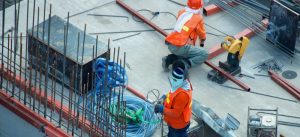Heavy equipment has been integral to the development of modern infrastructure and industrial processes. These machines have transformed the way large-scale operations are conducted, from construction and mining to material handling and roadwork. Their size, strength, and capabilities make them indispensable tools in various industries. This article delves into the types, applications, technological advancements, and the future of heavy equipment.
 Construction, for example, requires heavy equipment to move earth, demolish structures, and transport materials. The same goes for the mining sector, where specialized equipment is necessary to extract minerals from the earth efficiently. By reducing manual labor and improving productivity, heavy equipment plays a crucial role in the growth of economies worldwide.
Heavy equipment’s versatility, efficiency, and reliability have made it an essential part of the industrial landscape, making large-scale projects feasible and safe to carry out.
Learn more about heavy equipment.
Construction, for example, requires heavy equipment to move earth, demolish structures, and transport materials. The same goes for the mining sector, where specialized equipment is necessary to extract minerals from the earth efficiently. By reducing manual labor and improving productivity, heavy equipment plays a crucial role in the growth of economies worldwide.
Heavy equipment’s versatility, efficiency, and reliability have made it an essential part of the industrial landscape, making large-scale projects feasible and safe to carry out.
Learn more about heavy equipment.
1. The Importance of Heavy Equipment in Industry
1.1 Definition and Significance of Heavy Equipment
Heavy equipment refers to large, power-driven machines used in industries such as construction, mining, agriculture, logistics, and forestry. These machines are designed to perform tasks that require heavy lifting, digging, hauling, grading, and other challenging operations. The high weight and power of these machines make them perfect for handling operations that would otherwise be physically impossible or dangerous for humans. Construction, for example, requires heavy equipment to move earth, demolish structures, and transport materials. The same goes for the mining sector, where specialized equipment is necessary to extract minerals from the earth efficiently. By reducing manual labor and improving productivity, heavy equipment plays a crucial role in the growth of economies worldwide.
Heavy equipment’s versatility, efficiency, and reliability have made it an essential part of the industrial landscape, making large-scale projects feasible and safe to carry out.
Learn more about heavy equipment.
Construction, for example, requires heavy equipment to move earth, demolish structures, and transport materials. The same goes for the mining sector, where specialized equipment is necessary to extract minerals from the earth efficiently. By reducing manual labor and improving productivity, heavy equipment plays a crucial role in the growth of economies worldwide.
Heavy equipment’s versatility, efficiency, and reliability have made it an essential part of the industrial landscape, making large-scale projects feasible and safe to carry out.
Learn more about heavy equipment.
1.2 Key Roles of Heavy Equipment in Construction
In the construction industry, heavy equipment is essential for every phase of a project, from preparing the ground to erecting buildings and roads. These machines are designed to tackle tough jobs that would otherwise take weeks or months to accomplish manually. For example, excavators are used for digging foundations, trenches, and holes. They can also perform demolition work by breaking down old structures. Bulldozers, with their massive blades, are employed to level the land, making it suitable for construction. Cranes are used to lift and position heavy materials, such as steel beams and concrete blocks, during the construction of high-rise buildings. These machines not only enhance efficiency but also ensure the safety of workers by taking on high-risk tasks. By using heavy equipment, construction companies can meet deadlines, reduce costs, and improve the quality of their work. Discover the role of heavy equipment in construction.1.3 The Role of Heavy Equipment in Mining and Resource Extraction
Mining is one of the most demanding industries when it comes to heavy equipment. The extraction of resources such as coal, metal ores, and precious minerals requires specialized machinery that can handle large-scale operations. Heavy equipment in mining helps move earth, load materials into trucks, and drill through rock. For example, draglines are used in open-pit mining to remove overburden and expose valuable resources. Haul trucks are massive vehicles designed to transport extracted minerals from mines to processing plants. Shovels, loaders, and drills are used for digging, lifting, and cutting through solid rock and soil. With advanced technology, such as autonomous vehicles and GPS-guided equipment, mining operations are becoming more efficient and safer, increasing overall productivity and profitability. Learn more about mining heavy equipment.2. Categories of Heavy Equipment
2.1 Earthmoving Equipment
Earthmoving equipment is one of the most common categories of heavy equipment used for digging, grading, and excavating large volumes of soil or rock. These machines play a crucial role in preparing land for construction or mining activities.- Excavators: Excavators are used for digging trenches, foundations, and other types of holes. These machines have a large bucket attached to an arm, which can be rotated 360 degrees to perform a variety of tasks. Excavators can also be used for demolition and material handling.
- Bulldozers: Bulldozers are designed for pushing soil, sand, or debris. They are typically equipped with a large blade that can level out the ground. Bulldozers are used in construction projects for land clearing and grading.
- Skid-Steer Loaders: These compact machines are highly maneuverable and can be fitted with various attachments for tasks such as digging, lifting, and transporting materials. They are used in construction, landscaping, and agricultural applications.
2.2 Lifting and Hauling Equipment
Lifting and hauling equipment is used for transporting materials and heavy loads, ensuring that large quantities of earth or materials are moved quickly and safely.- Cranes: Cranes are among the most versatile lifting machines used in construction and industrial settings. They are used to lift materials to great heights, making them essential for tasks such as building high-rise buildings and installing heavy machinery. There are different types of cranes, including mobile cranes, tower cranes, and crawler cranes.
- Haul Trucks: Haul trucks, also known as dump trucks, are used to transport large amounts of material such as dirt, gravel, and sand. These trucks have large beds that can be lifted to unload materials easily, and they come in various sizes depending on the scale of the operation.
- Forklifts: Forklifts are used for lifting and moving materials in warehouses, construction sites, and industrial settings. They are particularly useful for handling pallets and other boxed goods.
2.3 Specialized Heavy Equipment
Specialized heavy equipment is designed to handle specific tasks that require high precision and customized features. These machines are essential for various industries, each having its own unique demands.- Pavers: Pavers are machines used for laying asphalt on roadways, parking lots, and driveways. They are equipped with a screed that evenly spreads the asphalt, ensuring a smooth and level surface. The machine’s versatility allows it to be adjusted for various road widths and thicknesses.
- Compactors: Compactors are used for compacting soil, asphalt, and other materials to create a stable foundation. These machines come in different forms, such as vibratory rollers and plate compactors, depending on the size and type of project.
- Drilling Rigs: Drilling rigs are essential for projects that require boring into the ground, such as oil and gas drilling, or creating deep foundations. These machines use rotating bits to penetrate rock and earth, extracting materials or creating the necessary holes for foundations or utilities.
- Tunneling Machines: In infrastructure projects like subway systems or underground utilities, tunneling machines are used to excavate tunnels quickly and efficiently. These machines can cut through rock, earth, or concrete, allowing workers to dig safely and accurately.
2.4 Safety and Maintenance of Heavy Equipment
Maintaining heavy equipment is crucial for ensuring its longevity, efficiency, and safety. Proper maintenance prevents costly breakdowns and extends the lifespan of these machines.- Regular Inspections: Operators and maintenance staff should conduct regular inspections of the equipment to check for signs of wear and tear. This includes checking the hydraulic systems, fuel levels, and tire pressure.
- Scheduled Servicing: Manufacturers often provide service schedules that outline when specific maintenance tasks should be performed, such as changing oil, replacing filters, and inspecting mechanical components.
- Operator Training: Proper training for heavy equipment operators is critical for preventing accidents and ensuring optimal performance. Operators should be familiar with the machine’s functions and safety protocols.
- Safety Protocols: Heavy equipment often involves hazardous tasks. Using safety gear such as helmets, gloves, and high-visibility clothing, along with adherence to safety guidelines, helps mitigate risks and ensures worker protection.
- Advanced Monitoring Systems: Newer machines are equipped with telemetry systems that allow managers to monitor machine performance remotely. These systems provide real-time data on fuel efficiency, engine health, and other metrics, making it easier to detect and fix issues before they cause breakdowns.





